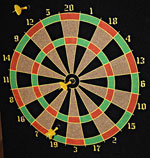How Do You Ground Your Training?
Sharing the Principles and Processes of Preparing Educators for Online Writing Instruction
Reflection in practice
Scenario E: What might the principle of Reflection look like in practice?
In Scenario E, the online writing program director of a growing program that offers local and distance online courses, assistant reader/graders, and a substantial online writing lab (OWL) has asked Ariel and Robert to collaborate in drafting an evaluative tool that can give instructor-trainees both qualitative and quantitative feedback about their asynchronous interactions with students. Familiar with the use of rubrics in their classrooms, Ariel and Robert discuss using well-known educational taxonomies as the basis of the assessment instrument/s. However, they also liked it when the program director provided them with feedback embedded into an example of their own training interactions. They are currently debating how to combine such options for feedback. They worry that when there are a lot of trainees to coach that they will not have time for writing in-depth comments, yet they do not want to leave out this more personal feedback strategy.
In addition, their program director has confided that, eventually, she would like to get similar assessment about the trainers' performances in the training roles, as well as regular assessment of the growing teaching team. Such reflective information might become unmanageable if not streamlined and focused in ways that offer specific types of information. Yet it could be less than useful if the assessment tools are not flexible enough to elicit "surprise" information that can assist in developing the program overall.
With this deeper context, Ariel and Robert realize that their work as trainers and teachers need to be able to withstand and benefit from similar reflection. In collaboration with their program director, they look to various methods that might be tested in developing the reflective part of their program. Such methods include:
- Reviewing demonstrable online competencies, such as platform-related technology skills, in a one-to-one synchronous presentation where the trainee shows the trainer what he can do with the technology.
- Providing micro and macro metacognitive exercises.
- Micro: Assessing other instructor-to-student simulations, looking at them for successful adherence to the program's overall goals or to the trainee's goals at that part of the training cycle.
- Macro: Providing self-reflection on one's own simulated teaching interaction, perhaps choosing an especially strong or weak one for review.
- A taxonomy that outlines the outcomes for particular types of teacher-student interactions; it might provide quantitative measures to assess the qualitative processes of both asynchronous and synchronous teaching interactions. It also might provide opportunity for qualitative commentary.
- Online questionnaires and telephone surveys to get student feedback regarding live teaching interactions.
The job that Ariel and Robert are undertaking with their online program director is a formidable one in that there are numerous methods to test and various ways to set expectations with online instructor-trainees, trainers, and instructors about Reflection as an active principle in their program. However, it also is an exciting process that feeds directly into developing and improving the training program as a whole.
